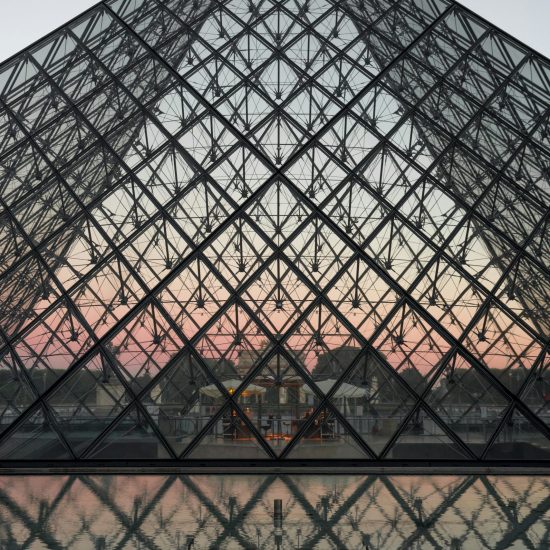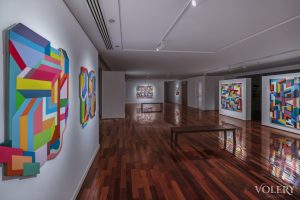The Louvre Museum, located in Paris, France, is one of the most visited and revered museums in the world. With its rich history, vast collection of art, and iconic status, the Louvre attracts millions of visitors each year. In this comprehensive guide, we will delve into the history, architecture, art collections, and visitor experience of the Louvre Museum.
1. History of the Louvre Museum
The Louvre Museum’s history dates back to the 12th century when it was originally built as a fortress by King Philip II. Over the centuries, it transformed from a royal palace to the world-renowned museum it is today.
The transformation began in the 16th century under the reign of King Francis I, who initiated the building’s conversion into a Renaissance-style palace. This era marked the beginning of the Louvre’s extensive art collection, as King Francis I was an avid art collector, bringing numerous pieces into the royal collection.
In 1793, during the French Revolution, the Louvre officially became a public museum. The revolutionary government opened the doors of the Louvre, allowing the general public to access the royal collections for the first time. Since then, the museum has expanded significantly, with numerous renovations and additions, becoming the vast and diverse institution it is today.
2. Architecture and Design of the Louvre Museum
The architecture of the Louvre Museum is a testament to its long and varied history. The original medieval fortress foundations are still visible in the museum’s basement, offering a glimpse into its past.
The Renaissance period brought significant changes, particularly under King Francis I and his successors. The Louvre’s Cour Carrée (Square Courtyard) and the Grande Galerie are prime examples of Renaissance architecture, featuring elegant facades and intricate detailing.
The most iconic architectural addition came in the 20th century with the construction of the glass pyramid entrance, designed by Chinese-American architect I. M. Pei. Completed in 1989, the pyramid serves as the main entrance to the museum and has become a modern symbol of the Louvre. This blend of old and new architecture creates a unique and harmonious aesthetic that defines the museum’s identity.

Source: https://unsplash.com/photos/walking-holding-umbrella-walking-on-building-corridor-IzF_2HDSg0w
3. Notable Art Collections in the Louvre Musem
The Louvre Museum boasts an extensive collection of over 380,000 objects, spanning from ancient civilizations to the 19th century. Among these, some of the most notable collections include:
1. Ancient Egyptian Antiquities: The Louvre houses one of the world’s most comprehensive collections of ancient Egyptian artefacts. Highlights include the Great Sphinx of Tanis, the Seated Scribe, and the treasure of Tutankhamun.
2. Greek and Roman Sculptures: The Louvre’s collection of Greek and Roman sculptures is equally impressive, featuring iconic works such as the Venus de Milo, the Winged Victory of Samothrace, and the Dying Gaul.
3. Renaissance Art: The museum’s Renaissance art collection is renowned, with masterpieces by Leonardo da Vinci, including the Mona Lisa, and works by Michelangelo, Raphael, and Titian. These works highlight the artistic achievements of the Renaissance period and attract millions of visitors each year.
4. The Mona Lisa: The Star Attraction
No visit to the Louvre Museum is complete without seeing the Mona Lisa, arguably the most famous painting in the world. Painted by Leonardo da Vinci in the early 16th century, the Mona Lisa’s enigmatic smile and mysterious background have captivated audiences for centuries.
The painting’s fame is partly due to its masterful execution, with da Vinci’s use of sfumato (a technique of blending colours and tones) creating a lifelike and enigmatic image. Additionally, the Mona Lisa’s theft in 1911 and its subsequent recovery added to its mystique and notoriety.
Today, the Mona Lisa is displayed in a climate-controlled, bulletproof glass case to preserve and protect it. Despite the crowds, seeing this iconic painting in person is an unforgettable experience, embodying the allure and mystique of the Louvre Museum.
5. The Louvre Pyramid: A Modern Icon
The Louvre Pyramid, designed by I. M. Pei, is a striking contrast to the historic architecture of the Louvre Palace. Completed in 1989, the pyramid serves as the main entrance to the museum and has become an iconic symbol of the Louvre.
The pyramid’s design, made entirely of glass and metal, was initially controversial. Critics argued that it clashed with the classical architecture of the palace. However, over time, it has been embraced as a bold and innovative addition to the museum, representing a bridge between the old and the new.
The pyramid is surrounded by three smaller pyramids and sits atop an underground lobby that efficiently manages the flow of visitors. The combination of transparency and modernity in the pyramid’s design reflects the museum’s commitment to blending tradition with contemporary elements.

Source: https://unsplash.com/photos/black-vehicle-near-building-j1k5vKRFUHY
6. Visiting the Louvre: Tips and Recommendations
Visiting the Louvre Museum can be an overwhelming experience due to its vast size and extensive collections. Here are some tips to make the most of your visit:
1. Plan Ahead: The Louvre is immense, and it’s impossible to see everything in one visit. Prioritize the sections and artworks you most want to see, such as the Mona Lisa, the Egyptian Antiquities, and the Greek sculptures.
2. Book Tickets in Advance: To avoid long lines, especially during peak tourist seasons, book your tickets online in advance. The Louvre also offers timed entry tickets to help manage the flow of visitors.
3. Take a Guided Tour: Consider taking a guided tour to gain deeper insights into the museum’s history and collections. Guided tours often provide context and stories behind the artworks, enriching your experience.
7. The Louvre’s Impact on Art and Culture
The Louvre Museum’s influence extends far beyond its walls, impacting art and culture globally. As a premier institution for art and history, the Louvre plays a crucial role in education, research, and cultural exchange.
The museum’s vast collections provide invaluable resources for scholars and researchers. The Louvre collaborates with institutions worldwide, lending artworks for exhibitions and conducting joint research projects. These collaborations foster a greater understanding of art and history across different cultures.
Additionally, the Louvre’s digital initiatives, such as virtual tours and online collections, make its treasures accessible to a global audience. These efforts democratize access to art and education, ensuring that people worldwide can experience and learn from the Louvre’s vast collections.
Conclusion
The Louvre Museum stands as a beacon of art, history, and culture, attracting millions of visitors from around the world. Its rich history, stunning architecture, and unparalleled collections make it a must-visit destination for art lovers and history enthusiasts alike. From the enigmatic smile of the Mona Lisa to the modern elegance of the Louvre Pyramid, the museum offers a journey through time and creativity that leaves a lasting impression on all who visit.
For further reading and to plan your visit, refer to the Louvre Museum’s official website and various reputable travel guides.
References:
- The Louvre Museum Official Website: www.louvre.fr
- Rick Steves’ Paris: Travel Guide by Rick Steves
- The Art Newspaper: Louvre Museum Articles and Reviews




